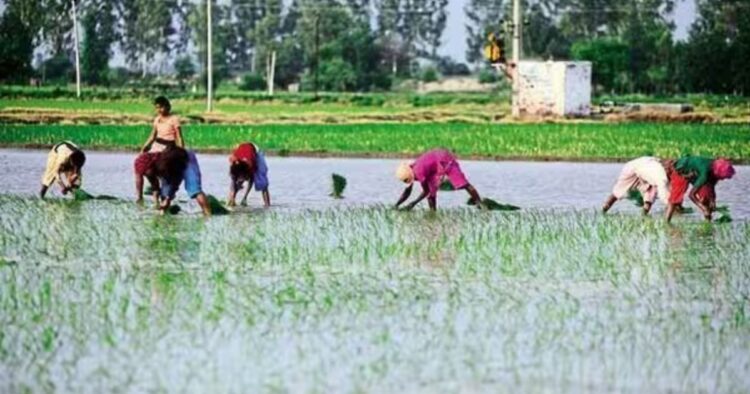India’s agriculture sector continues to show resilience and growth as the sowing of Kharif crops has surpassed last year’s figures. According to the latest data from the Agriculture Ministry, farmers have sown Kharif crops across 979.89 lakh hectares so far this year, marking a 1.4% increase compared to the 966.40 lakh hectares sown during the same period last year. This growth in sowing highlights the country’s robust agricultural practices and the positive impact of favorable conditions.
Commodity-Wise Gains and the Role of Government Support
The data reveals that key commodities such as paddy, pulses, oilseeds, millets, and sugarcane have seen an increase in sowing on a year-on-year basis. This expansion in cultivation is a testament to the growing confidence among farmers and the effectiveness of government initiatives aimed at supporting agricultural activities.
However, it is important to note that there has been a decline in the sowing of cotton and jute/mesta. Despite this, the overall progress in other major crops has contributed to the positive outlook for the agricultural sector.
Agriculture Minister Shivraj Singh Chouhan recently reiterated the central government’s commitment to ensuring 100% procurement for Urad, Arhar, and Masur pulses in all states. This move is expected to encourage more farmers to engage in pulse cultivation, thereby reducing India’s reliance on imports and boosting domestic production. The government’s proactive stance in promoting pulse cultivation is a significant factor driving the increased sowing of these crops.
India’s Dependence on Pulses and the Efforts to Reduce Imports
India is one of the largest consumers and producers of pulses globally. Despite this, the country has historically depended on imports to meet a portion of its consumption needs. In the current year, pulses imports have nearly doubled, reflecting the growing demand within the country.
The government has implemented various measures, including incentives for farmers, to reduce this dependency and encourage greater domestic production. The increased sowing of pulses this year is a positive indicator that these efforts are yielding results.
The success of India’s Kharif crop season is closely linked to the performance of the monsoon rains. The southwest monsoon, which occurs from June to September, is responsible for over 70% of India’s annual rainfall. This year, the India Meteorological Department (IMD) has predicted an above-normal monsoon, while private forecaster Skymet has also forecast a normal monsoon.
The timely and adequate arrival of monsoon rains has played a crucial role in the increased sowing of Kharif crops, providing much-needed water for the fields and ensuring healthy crop growth.
A Positive Outlook for India’s Agriculture Sector
With nearly 45% of India’s population relying on agriculture for their livelihood, the positive trend in Kharif crop sowing is a welcome development. The increase in sowing, supported by favorable monsoon conditions and proactive government policies, bodes well for the country’s agricultural output.
As the Kharif season progresses, India can look forward to a strong harvest, which will contribute to the overall economic growth and food security of the nation.
The increased sowing of Kharif crops this year is a clear indication of India’s resilient agricultural sector. The combination of favorable weather conditions, government support, and the dedication of Indian farmers has resulted in a positive outcome that will benefit the entire country. As India continues to build on these successes, the future of its agriculture sector looks promising.
ALSO READ: “Significant Milestones Expected As Farmers Adopt Natural Farming Says PM Modi”

















Comments